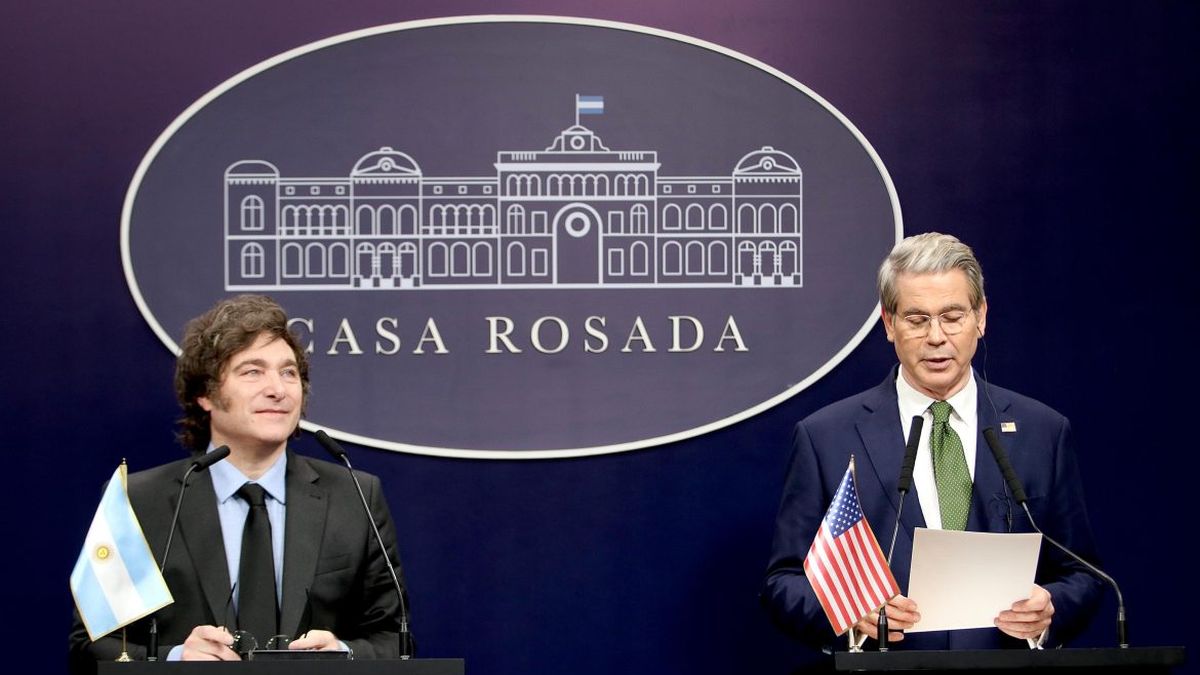For the Peterson Analyst Institute of International Economics (Piie) Monica de Boelli“It is a really unprecedented situation “. And questioned the statements of Trump’s official: “Besent has said about the swap that it is not money, but it is clearly silver. “
The Mirror of Mexico
According to information published by the US Treasury, the ESF “had a large number of swap lines after World War II, mainly with Latin American countries, but these were gradually eliminated“
For the 1970s, they added that “Only a swap line was left with Mexico And, in 1994, that line was included in the North American Free Trade Agreementwhich also covers the lines of SWAP of the Federal Reserve and the Bank of Canada with Mexico“
Consulted by Scopethe economist of Eco Go, Rocío Bisanghe explained that “the most relevant antecedent, similar and for including a swap, It was that of Mexico in 1995, within the framework of the Tequila crisis“
In this regard, he explained that “the program included US $ 9,000 million in a 90 -day swap (of the ESF and the Federal Reserve) and even U $20,000 million in loans and guarantees at 5 and 10 years, with a rate slightly above the Libor rate. “
Javier Milei Donald Trump
Donald Trump and Javier Milei will meet again in the White House.
Swap’s weight on the economy
Complementary, Vincient Arnoldeconomist of the Bretton Woods committee, a American tank tank, said it is difficult to have details about the characteristics that the agreement would have with Argentina, since “The SWAPS of the ESF are performed in a ‘ad hoc'” way.
“To historically contextualize, the maximum amount announced for Mexico in its 1995 swap was US $ 20,000 million, which represented approximately 5.3% of Mexican GDP at that time“
In the event that those US $ 20,000 million for Argentina, The swap with the government of Javier Milei would be “to 3.2% of approximately Argentine GDPfor what is within the historical limits. “
From Boelle considered that “On that occasion Mexico had finished negotiating to access the gasoline And the United States had no choice but to help Mexico. But not now, now they would have the possibility of saying anything. ”
Future conditioning and differences
As it contrades that support, Bisang added that “Mexico promised to deposit income from exports of (the state oil company) Pemex in an American accountfunctioning as collateral. “In addition, he commented that” This was given to an agreement with the International Monetary Fund (IMF)so there were already commitments to reduce deficit and inflation and some structural reforms. “
For its part, a recent PXQ report stated that although there are several similarities between the Argentine and Mexican case, there are also differences. “The US rescued Mexico, but to its own financial systemsince most of the short -term money that was invested in the Mexican Treasury bonds came from that country, “he explained.
In this sense, it was added that “In the case of Argentina, salvage has a more geopolitical reason: Trump needs an ally in his battle against China in a region ‘turned to the left’.
On this point, the consultant Emmanuel Álvarez Agis He stated that the “exchange stabilization fund never suffered a default and, not to lose the undefeated, Argentina should accumulate reservations, that is, allow a higher exchange rate“
Source: Ambito




